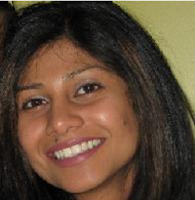In this week’s session, we explored Evernote. I have been a strong advocate for using this tool, as you are able to type notes, store documents, record audio, and capture images from multiple devices. Speaking of devices, I have the Evernote app on my mobile device, a windows desktop version, and I am able to easily access my digital “filing cabinet” from anywhere using a browser. I believe this is the strength of using Evernote; I am able to use any of my devices to capture my thoughts, add resources I have come across from Twitter, Pinterest, Feedly, or simply browsing on the Internet. The best part of it all is that no matter what device I use, Evernote has the ability to synchronize my activity.
There is a wealth of information online and it requires us to filter through it all. Online bookmarking tools provide us with ways to organize, search, and synthesize the topics of interests to us. Using online bookmarking allows me to stay on top of my professional field and the information I gather can be easily shared amongst my team. Learning for me is a social activity; being able to collaborate with my colleagues digitally brings a lot of great discussion into our team meetings.
Social media provides us with a platform to create PLE’s where we are able to get inspired, share knowledge, engage in critical reflection, and curate content that allows us to develop personally and professionally. The development of digital literacy allows us to work towards becoming good citizens in a digital realm. Advancements in technology are making its way into the workplace. As educators, we should be incorporating these technologies into teaching and learning to prepare our learners to use these technologies appropriately; in meaningful and respectful ways.
So the question remains, how do we teach our leaners about digital citizenship where ethical use manifests itself when engaging in digital activities? My recommendation to all educators would be to integrate technology into their practice and model netiquette rather than being submissive to digital exclusion. The Technological Pedagogical Content Knowledge (TPACK) framework is a helpful guide that addresses the effective integration of technology into teaching and learning and resonated with me from my Feedly Reader. Below is a little snippet about the framework:
We have to keep in mind that it is not about the technology we use; it is how we use technology efficiently and appropriately to create effective PLE’s. To promote digital rights and responsibility, as educators we need to become more digital literate. The more we learn about the advancements in technology and the more we use it, can help us understand and shed some light on the potential for teaching and learning as well as personal and professional development; then only can we steer our learners in becoming digital citizens.




